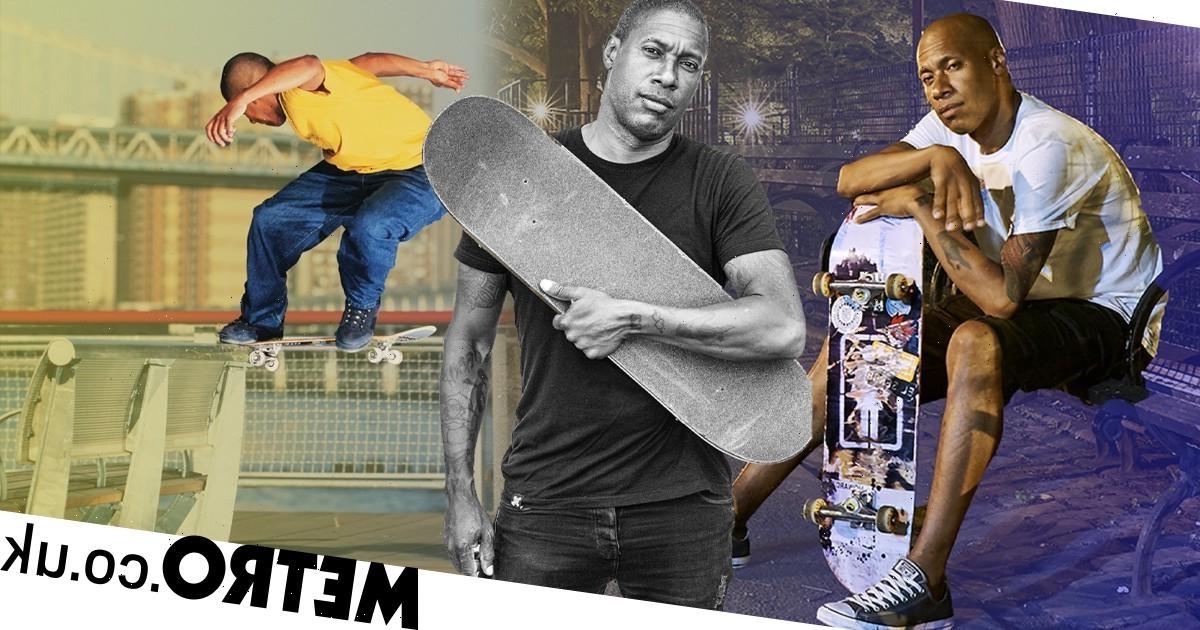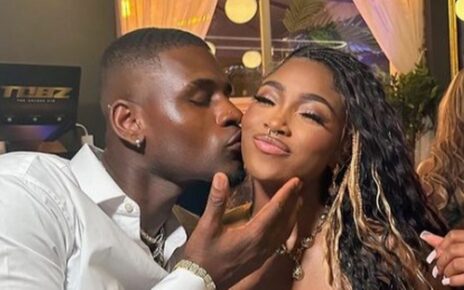Skateboarding in New York City is like nothing else.
You cruise around, up and down, and all around – without a care in the world: dodging cars, pedestrians, cyclists, and dogs in the ever-changing landscape of NYC.
Nothing can stop, or top, the energy this city gives you.
I’ve been skating 37 years out of my 50 years on this Earth. No matter how old or young you are, skateboarding will always bring the youth out of you.
Once I touched my first board at age 14, there was no looking back. Seeing my best friend with his made me want one so I could roll with him.
I knew within the first 10 minutes that my life as a youth running around the dangerous streets of Washington Heights in uptown Manhattan would completely change.
It was a magical feeling. I don’t even know how to explain it. It was such a rush unlike any other I had experienced. But I would also soon be facing huge challenges.

Skateboarding in the eighties and nineties was mentally a test of will. Back then skateboarding wasn’t accepted by a majority of the population.
There was no level of respect for us because we were the outcasts. We didn’t fit into the norm of what people were doing back then. We were scum because we were seen as lawless, and cops and security guards hated us.
Growing up in the Heights or NYC in general was not your typical California (where skating originated from) sunny skies, with blonde hair, board shorts and a beautiful ocean. It was gritty, dodging drug dealers, tons of garbage and dog crap everywhere.
The biggest challenge of all was being picked on and teased by everyone including family, and even friends that didn’t understand what we were doing. They’d say ‘look at you, you want to be a white boy’.
At the time skateboarding was considered overall to be a white person’s sport from California. We were constantly being called names that are inappropriate to mention: like racial slurs and homophobic words.
My parents wrongly thought it was just going to be a hobby. For me it wasn’t about proving anyone wrong, but rather a natural feeling of something I wanted to do and pursue.
My friends and I would gather in a park in Washington Heights called Bennett Park. We would skate there seven days a week after school and on weekends.
Sometimes we skipped school or cut class and then would jump on the train and go straight downtown to the Brooklyn Banks on the Manhattan side, which was the center of skateboarding in New York in the late eighties and early nineties.
The pavement was made of brick that looked like waves under the Brooklyn bridge. That’s as close as we got to what a wave felt like in this urban jungle.
We had to work with what we had, making ramps out of plywood in the street or putting a garbage can by a curb to cut and jump it. It’s pretty amazing what the imagination can do to make things happen.
Skating especially at that time felt like we were in our own world. It was like a real life Peter Pan fantasy movie.
I knew it was going to be a fun career when I got my first sponsor from Jab skateboards. This guy in New Jersey scouted me out along with a few of my friends I skated with.

I kept my high school education going but I truly was mentally tapped out from it because I felt skateboarding was my path to follow and so I went with my passion for it.
We had no idea we were in a dream back then, we were just doing something out of passion.
I was getting free stuff like skateboards and t-shirts from my first sponsorship at age 16, which was unheard of.
Once that part of my skateboarding career started, I knew there was definitely no turning back.
I was getting regularly flown to the Mecca of skateboarding in California to enter contests and do skateboarding demos (which meant skating in front of hundreds of kids with the team I was on at the time). Meeting the skaters I looked up to, skating and becoming friends with them was life-changing.
I returned home to NYC in 1993/94 around the age of 22 and there was a casting for a film named Kids by Harmony Korine and Larry Clark. The movie was about the life of a bunch of New York skateboarders/teens. It showed the day in the life of a New Yorker with no holds barred and no supervision. The element of teenage sexuality and HIV/AIDS was addressed as well.
Harmony skated with us during the early nineties, so the people cast for the film were all of my skating friends. No one had a clue that the film would take off the way it did and it put the first spotlight on us, shifting the lens from hooligan skaters to: ‘Wow, who are these people?’
That film enhanced all of our lives, and created opportunities for us kids: modeling, acting… you name it. There was no money in skateboarding before, so that was our meal ticket.
By 1994, the NYC skateboarding scene was bursting at the seams. James Jebbia, an American-British fashion designer, businessman and visionary who always has his finger on the pulse, opened a skate shop called Supreme.
This was needed in NYC because there were no core shops at the time. The shop was out of this world: it was our clubhouse, it was home.
Knowing that I wasn’t making consistent money as a skateboarder, I took a job there – managing it with my friends.
The next chapter in life kicked off with Supreme because we now all had a home to congregate at. We were changing the world and shaping culture without even knowing it.
We went from ‘hoodlum skaters and outcasts’ to the skateboarders everyone wanted to hang with and be like.
We were a different breed of New Yorkers no one had seen or experienced: we were not rappers, rockers or punkers. We were all the above with no label. We made art through the imagination of where skateboarding took us.
That was the attraction to us: you couldn’t figure out what we were on or off the board.
I think the passion and energy oozed off us because we had no care in the world, and were not trying to impress anyone. We were just being ourselves and staying true to that.
It’s that energy that makes me the skateboarder I am today.

We paved the road for the kids that are skating now at a time where skateboarding is generally very accepted around the globe. I am grateful for that.
Many of my friends don’t skate anymore because they have other responsibilities, like raising families or other passions they are pursuing. We are still in contact and remain close.
As for me, at age 50, I still live and breathe skateboarding. I am fully invested in keeping the energy alive, and pushing the culture forward: from hosting skate contests to mentoring people and launching my book Full Bleed: New York City Skateboard Photography. Full Bleed is a book on NYC skateboard photography spanning 30 years, with a foreword from skate icon Tony Hawk.
It felt amazing to see glimpses into the past while working on the Full Bleed book because it also meant watching the evolution of skateboarding via images in NYC. The energy, aggression and all of the fun is in the pages. It truly speaks to you when you look at it.
It’s especially meaningful, as I know every single person in the book from the photographers to the skaters.
Today I have a wonderful 12 year old daughter named Sydney, and my fiancé Flutura. They love everything that I do in skating and support my passion for it, but they don’t skate themselves.
My skate family is who I roll with, laugh, push around with, and have the best time with regularly.
I continue to do anything I can to push skaters to the max with positivity, inspiration and support.
I’m proof that it’s never too late to skateboard. That breeze you catch from just pushing around gives you a sense of freedom and helps put your life in perspective, regardless of where you come from or what age you are.
Alex’s book Full Bleed: New York City Skateboard Photography (10th Anniversary Edition) is out now and available for purchase here.
Age is Just a Number
Welcome to Age is Just a Number, a Metro.co.uk series aiming to show that, when it comes to living your life, achieving your dreams, and being who you want to be, the date on your birth certificate means nothing.
Each week, prepare to meet amazing people doing stereotype-defying things, at all stages of life.
If you have a story to share, email [email protected]
Source: Read Full Article



